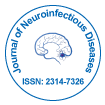开放获取期刊获得更多读者和引用
700 种期刊 和 15,000,000 名读者 每份期刊 获得 25,000 多名读者
索引于
- 哥白尼索引
- 谷歌学术
- 打开 J 门
- 参考搜索
- 哈姆达大学
- 亚利桑那州EBSCO
- OCLC-世界猫
- 出租车直达
- 普布隆斯
- 日内瓦医学教育与研究基金会
- ICMJE
有用的链接
开放获取期刊
分享此页面
抽象的
Nerve Conduction Tests and EMG in Carpal Tunnel Syndrome: A Comprehensive Assessment
Maseru Burke
Carpal Tunnel Syndrome (CTS) is a prevalent and debilitating condition characterized by the compression of the median nerve within the carpal tunnel of the wrist. Early diagnosis and effective management are essential for mitigating symptoms and preventing long-term nerve damage. Nerve conduction tests (NCT) and electromyography (EMG) are widely employed diagnostic tools to evaluate the extent of nerve impairment and guide treatment decisions. This abstract summarizes the current understanding of the utility of NCT and EMG in the assessment of CTS. NCT serves as a valuable initial screening tool for CTS, offering objective measurements of nerve conduction velocity and amplitude. Abnormal findings, such as prolonged distal latencies and reduced sensory nerve action potentials, are indicative of nerve dysfunction. Furthermore, NCT can aid in differentiating CTS from other conditions that mimic its symptoms, ensuring a more accurate diagnosis. EMG complements NCT by providing insights into the severity and localization of nerve damage in CTS. By assessing muscle activity, EMG can detect denervation changes, fibrillation potentials, and sharp waves, which are indicative of chronic nerve compression. This information is vital in determining the appropriateness of surgical intervention and predicting post-operative outcomes. Combined, NCT and EMG offer a comprehensive diagnostic approach to CTS, allowing healthcare providers to tailor treatment plans to the specific needs of each patient. Conservative treatments, such as wrist splints and physical therapy, are often recommended for mild cases based on NCT and EMG findings. In more severe or refractory cases, surgical release of the carpal tunnel may be indicated, with EMG aiding in the selection of appropriate candidates. An integrated approach, combining clinical assessment with these electrodiagnostic techniques, ensures a more accurate diagnosis and tailored treatment plan for individuals suffering from CTS.

 English
English  Spanish
Spanish  Russian
Russian  German
German  French
French  Japanese
Japanese  Portuguese
Portuguese  Hindi
Hindi